Bridgerton fan? Here’s how to walk in Lady Whistledown’s footsteps in Bath
As the third season of Bridgerton drops on Netflix, there couldn’t be a better time to immerse yourself in the Regency era. But there’s more to do in Bath apart from set-jetting.
Based on the popular romance novels by Julia Quinn, ’s Bridgerton is an over-the-top extravaganza—bright colours, rich costumes, stunning locations, and beautiful people come together in this swoon-worthy Regency romance.
The Shonda Rhimes’ series follows eight close-knit siblings of the Bridgerton family—Anthony, Benedict, Colin, Daphne, Eloise, Francesca, Gregory, and Hyacinth—as they navigate London high society in search of love amid friends and foes.
The story revolves around the sophisticated Bridgertons and the gauche Featheringtons—the two high society families of the town—and how their offspring aim to find eligible husbands won hearts when the first season was screened in December 2020 amid the COVID-19 pandemic.
A ‘Diamond of the First Water’, Daphne Bridgerton’s debut on London’s marriage market at a time when the eligible Duke of Hastings, Simon, returns to town was a huge hit. It was followed by a successful second season in which Anthony begins his search for a wife; the reformed rake is conflicted between Simone Ashley’s Kate Sharma and her sister Edwina (Charithra Chandran). May 2023 saw the release of Queen Charlotte: A Bridgerton Story, a spin-off series focused on Queen Charlotte.
Rhimes chose Bath, located in the west of England and renowned for its Georgian architecture, to represent early 19th century London in the Netflix series. And now, ahead of the much-anticipated third season—the love story of Penelope Featherington (the infamous Lady Whistledown) and Colin Bridgerton—interest in Bath is rising as people plan their summer holidays.

Famed for its Georgian architecture, the golden city of Bath is a filming favourite.
Located in the valley of the River Avon, Bath has been a wellness destination since Roman times. The compact nature of the city means a walking tour is the best way to learn more about the history and culture of a place that everyone from Jane Austen and Thomas Gainsborough, to former British Prime Minister William Pitt the Elder and, more recently, actor Nicolas Cage have lived in.
Many period dramas have been filmed in Bath, including Prime series The Pursuit of Love (2021), the film adaptation of Les Miserables (2012), and Reese Witherspoon’s Vanity Fair (2004).
However, Bridgerton has single-handedly changed Bath’s fortunes. A global travel insight report by Visa in November 2022 revealed that an increase in visitors to Bath and North East Somerset after Bridgerton was released aided travel recovery to the region, post-pandemic.
As set-jetting truly takes off in the UK, Bath finds itself at the forefront, with travellers keen to explore what they have been seeing—and loving on the screens. That means, exploring the Abbey Green, which depicted a market square in Bridgerton; The Holbourne Museum, home to the grand Lady Danbury; No.1 Royal Crescent, which was where the Featheringtons lived; Royal Crescent, which represents Governor's Square in Mayfair, London; Abbey Deli, the location for Modiste's Dress Shop; and 12 Trim Street, a hairdressing establishment that depicts Gunter's tea shop.
But what do you do in Bath after retracing the footsteps of the Regency-era social elite? Be it a short break or a long one, there are plenty of options. We let you in on what Lady Whistledown would do. Secretly, of course!
Explore the iconic architecture
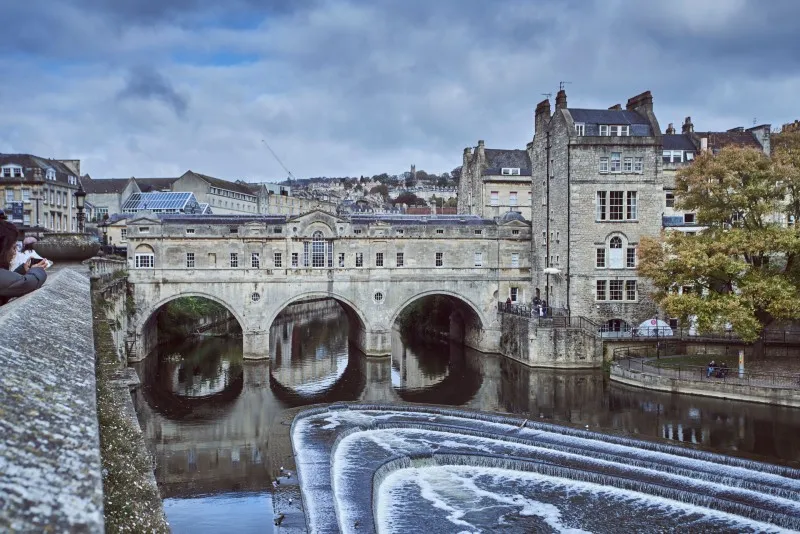
Pulteney Bridge is a Palladian-style Grade I listed building with shops built across its full span on both sides.
Bath is the only city in Britain to achieve World Heritage Status, and showcases gorgeous examples of Palladian architecture interspersed and integrated with urban spaces to provide “picturesque aestheticism”. This, according to UNESCO, provided “an integration of architecture, urban design, and landscape setting, and the deliberate creation of a beautiful city”.
Most buildings in Bath are made from the local, golden Bath Stone. The dominant Georgian architectural style evolved from the Palladian revival style that was popular in the early 18th century. Be it the Royal Crescent, a sweeping arc of Georgian townhouses fronted by lush green lawns and designed by John Wood the Younger, or the Circus, designed by his father, John Wood the Elder and one of the city’s most fashionable addresses since centuries, Bath offers plenty of sights.
Don’t miss the ancient Roman Baths, the well-preserved thermae designed for public bathing and used until the end of Roman rule in Britain in the 5th century AD; neoclassical architect Robert Adam's Pulteney Bridge, the Palladian-style Grade I listed building with shops built across its full span on both sides; and Bath Abbey, which was founded in the 7th century and is renowned for its beautiful fan vaulting.
Uncover the city’s bookish side
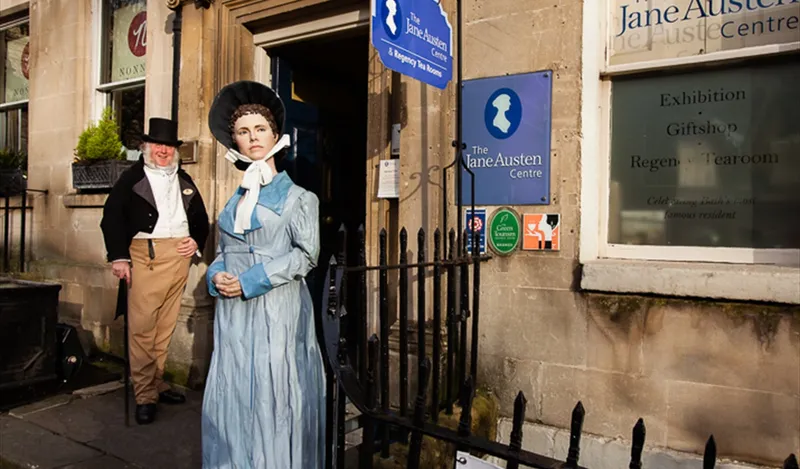
Costumed guides take you on an entertaining and informative journey at the Jane Austen Centre.
Bath has an extremely strong literary heritage, with numerous authors finding inspiration in the city.
Every Austen fan worth their salt knows that 18th century novelist Jane Austen once lived in Bath; Charles Dickens' The Pickwick Papers also mentions the city. Anna Sewell and Mary Shelley found their inspiration here, going on to write Black Beauty and Frankenstein, respectively.
The Jane Austen Centre is a celebration of Bath’s most famous resident. The costumed guides take you on an entertaining and informative journey in the museum set in a Georgian house. Dress up in dresses, bonnets, and coats, check out the exhibits, get a picture with the Austen waxwork, and end with ‘Tea with Mr Darcy’ in the Regency Tea Rooms, served in style by staff in full regalia.
If you love Goth lit, Mary Shelley’s House of Frankenstein is the atmospheric attraction for you. The immersive multi-sensory tour showcases Shelley’s life and her notorious creation through ominous soundtracks, bespoke smells, and unusual artefacts.
Enjoy a classic afternoon tea
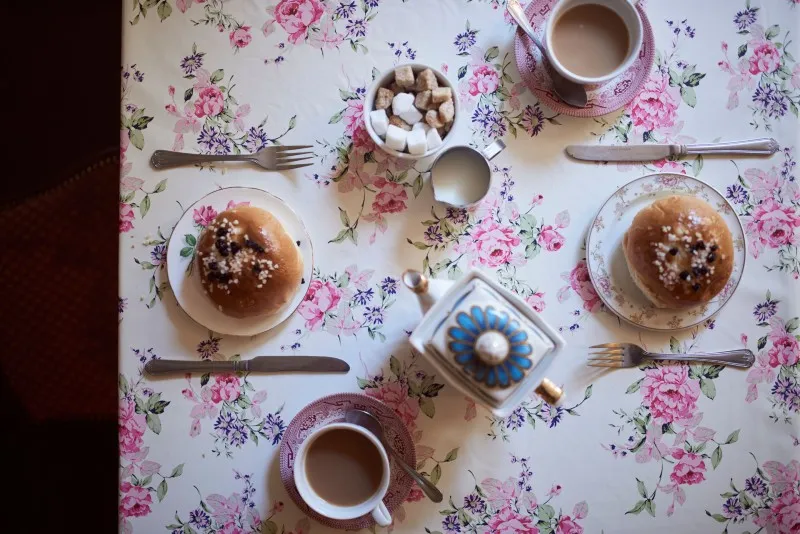
Order the famous Sally Lunn Bunn when you order afternoon tea at Sally Lunn's Historic Eating House in Bath.
Afternoon tea is an occasion across the UK, but it’s an experience to savour in Bath, the city Austen decided to set two of her six published novels (Northanger Abbey and Persuasion) in.
There are options for all kinds of budgets, including at the Pump Room, once described by Austen as the place where “every creature in Bath was to be seen in the room at different periods of the fashionable hours”.
Others include the Regency Tea Rooms at Jane Austen Centre, Roseate Villa, Lucknam Park, or the world-famous Sally Lunn’s Historic Eating House, which serves the famous Sally Lunn Bunn, a light brioche-like creation.
The Francis Hotel offers a Bridgerton-themed afternoon tea, replete with finger sandwiches, cakes, and delicious plain and fruited scones accompanied with Cornish cream and jam.
Take the waters in the original spa town
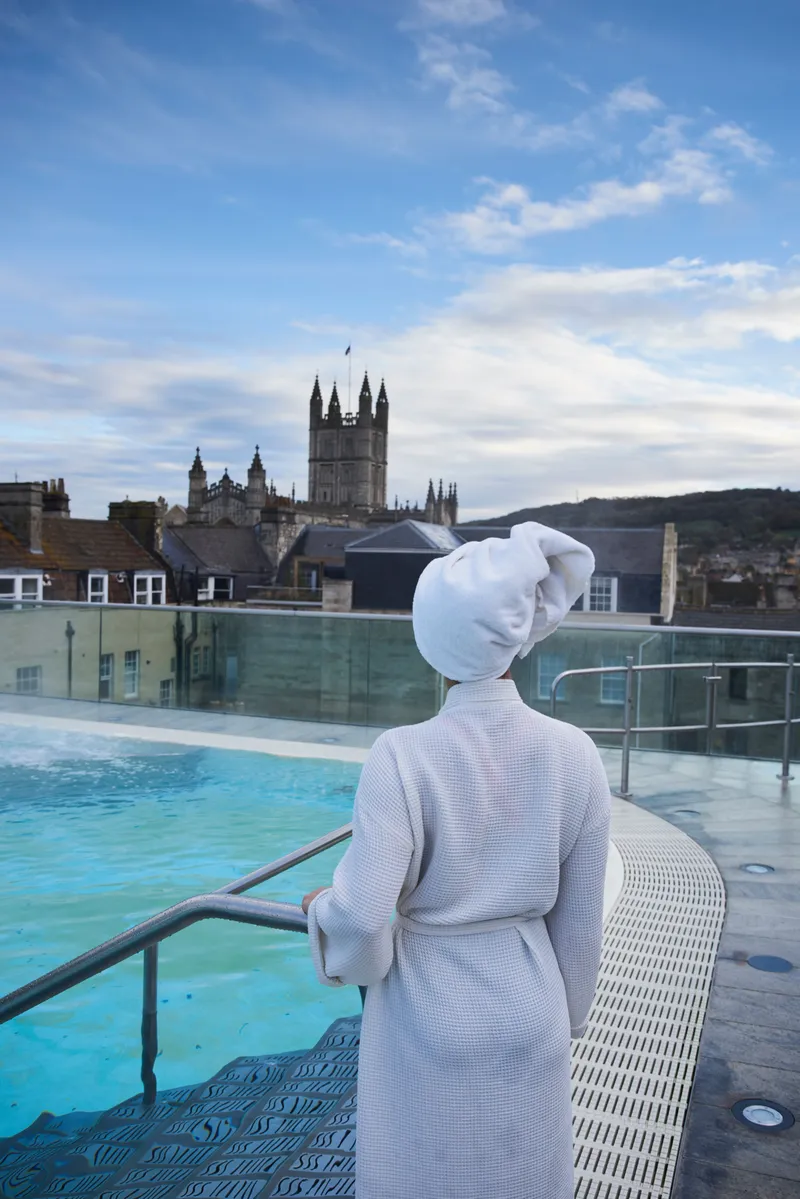
Check into a luxury spa hotel to know why bathing in the town's waters was so popular in the Regency era.
The Regency era brought many visitors to Bath, including Jane’s brother Edward, to cure their ailments by “taking the waters”. Bathing in the waters was extremely popular as was drinking the water in the Pump Room.
Today, the Roman Baths complex is one of the best-preserved Roman remains in the world. As much as 1,170,000 litres of steaming spring water, reaching 46°C, still fills the bathing site every single day. The ancient site houses changing chambers, plunge pools, and an interactive museum that reveal the lives of the Aquae Sulis people.
During the Regency time, visitors often drank up to eight pints of the spa water a day to maximise the health benefits of the water. Sample a glass of spa water, which contains 43 minerals, at the Pump Room before you end your spa day.
Time your visit to coincide with the Bath Festival
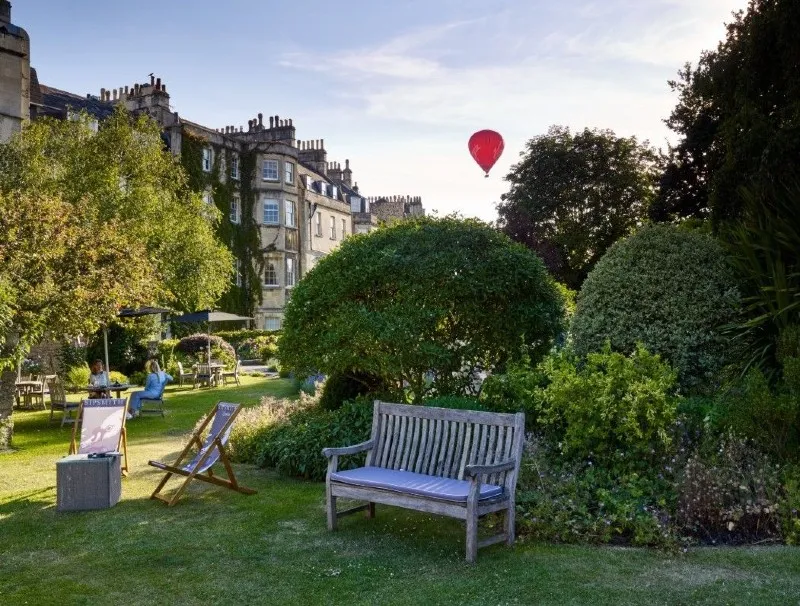
The Bath Festival will be followed by the Bath Fringe Festival, to be held from May 24 to June 9.
Bath comes alive during its biggest and oldest annual arts festival, to be held from May 17-26 this year. The celebration of books and music kicks off with an opening night party in the city, and there’ll be something for everyone.
The festival is spread across Central Bath, and solo musicians, bands, and choirs perform in dozens of venues, including pubs, churches, and museums. Grab your grub to go as you walk around the historic city, taking in performances at Bath Abbey, Parade Gardens, Milsom Place, and Green Park Station.
Sign up for one of the five walking tours by Fred Mawer Tours, register for a writing workshop and unleash your creative spirit, or be a part of the Poetry in the City Open Mic evening. Music and literature offer the best inspiration—especially in the gorgeous, golden city of Bath.
(Photos courtesy: Visit Britain)
(The copy was updated to correct a typo in the headline.)
Edited by Megha Reddy







